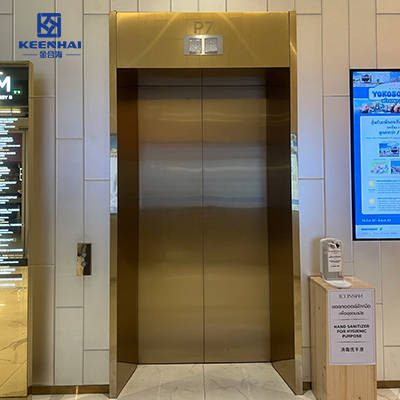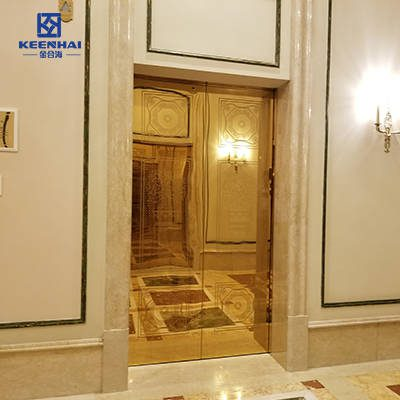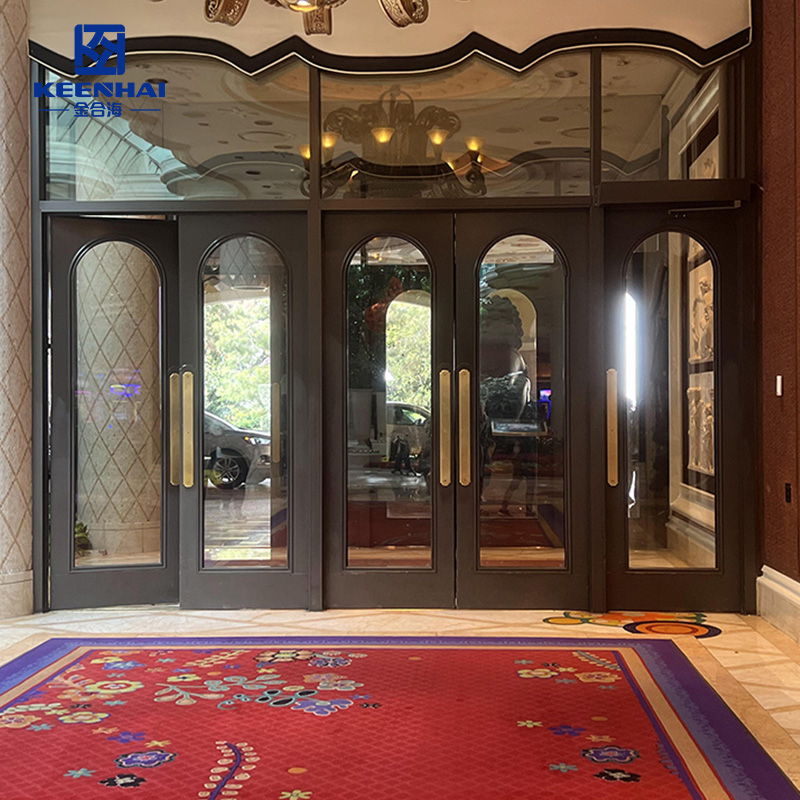PVD coating offers durability and a premium look, but the initial cost is high, including expensive equipment and energy-intensive processes. For commercial buildings or luxury elevators, this investment is justified, but smaller projects may find it harder to afford PVD-coated stainless steel.
1. High Initial Cost
The initial investment for PVD coating can be significantly higher than traditional surface treatments, which can be a barrier for some manufacturers and project developers. The main contributors to this cost are the specialized equipment, vacuum chambers, and precision control systems required to ensure a consistent, high-quality finish.
1.1 Equipment and Technology Investment
PVD coating requires state-of-the-art machinery, including vacuum deposition units, arc evaporators, and sputtering devices. Each of these components is engineered for precision and durability, which naturally increases upfront expenses. In many modern buildings, using colored stainless steel panels for elevators, façades, or decorative wall features justifies this investment, as the result is a finish that lasts decades with minimal maintenance.
1.2 Material and Energy Expenses
Besides equipment, the process consumes high-purity metals like titanium, zirconium, or chromium, along with a significant amount of energy to maintain vacuum and temperature controls. Compared to conventional coatings, PVD finish steel surfaces demand more controlled conditions, which translates to higher per-unit costs.
| Cost Factor | PVD Coating | Traditional Coating |
|---|---|---|
| Equipment | $200k–$500k+ | $10k–$50k |
| Materijal | High-purity metals (Ti, Zr, Cr) | Standard paints or plating chemicals |
| Energy Consumption | High (vacuum + heating) | Moderate |
| Labor | Skilled operators | Standard coating staff |
| Maintenance | Minimal long-term | Frequent touch-ups needed |
Even though the upfront cost is high, the long-term value is significant. For example, using PVD-coated stainless steel in high-traffic areas like hotel lobbies or retail escalators reduces replacement and repair costs over the life of the building. Some designers also prefer our stainless steel brand for premium projects, ensuring quality and color consistency across installations.

2. Limited Thickness and Repairability
While PVD coating provides exceptional durability and aesthetic appeal, it comes with inherent limitations in thickness. Unlike traditional coatings that can be applied in multiple layers, PVD-coated stainless steel typically has a layer ranging from 0.25 to 5 microns. This thin layer is sufficient for most decorative and functional applications, but it can be more susceptible to localized damage if mishandled during installation or maintenance.
2.1 Thin Coating Layer Constraints
The extremely thin nature of the coating means that even minor scratches or abrasions can penetrate the surface and expose the base metal underneath. For high-traffic areas, such as elevator doors or wall panels in shopping malls, careful handling is crucial. For example, many commercial projects opt for PVD finish steel surfaces on elevator interiors because the finish is visually stunning, but installers must follow strict handling protocols to avoid early damage.
| Značajka | PVD Coating | Traditional Coatings |
|---|---|---|
| Layer Thickness | 0.25–5 microns | 10–50 microns (paints or electroplating) |
| Scratch Resistance | High but localized damage possible | Moderate to high, easier to recoat |
| Reapplication | Complex, requires full process | Easier touch-ups or overcoating |
2.2 Difficulty in Touch-Ups or Repairs
Once a PVD coating is scratched or worn, repairing it is not straightforward. Unlike paints or electroplated layers that can be touched up on-site, PVD repairs usually require a complete reprocessing in a controlled vacuum environment. This adds both cost and time if damage occurs.
In architectural applications, such as elevator cladding or exterior façades, designers and maintenance teams must plan preventive care:
-
Avoid abrasive cleaning tools or harsh chemicals.
-
Handle panels carefully during installation.
-
Use protective films during construction or renovation.
Even though touch-ups are challenging, the long-term benefits of PVD coating — including vibrant color retention, corrosion resistance, and low maintenance — often outweigh the repair difficulties. Many developers trust our stainless steel brand to ensure consistent quality and finish across entire projects, reducing the likelihood of repair needs.

3. Substrate Sensitivity
PVD coating delivers exceptional aesthetics and durability, but its performance heavily depends on the substrate material. The coating bonds at a molecular level, which means that surface conditions and metal type play a critical role in achieving a flawless finish. Understanding substrate sensitivity is essential for architects, designers, and manufacturers who want consistent, long-lasting results.
3.1 Surface Preparation Requirements
Before applying PVD, the substrate must be meticulously prepared. Any contamination, scratches, or unevenness can prevent proper adhesion, leading to peeling or inconsistent color. For example, when using pvd coated stainless steel for elevator panels or decorative wall cladding, professionals carefully polish and clean the metal surface, ensuring it is free of oils, fingerprints, and dust.
Key steps include:
-
Mechanical polishing to smooth the surface.
-
Chemical cleaning to remove any residue or oxidation.
-
Final inspection to ensure uniformity before deposition.
Even minor lapses in preparation can compromise the coating’s durability and visual appeal.
3.2 Limitations on Certain Metals or Alloys
Not all metals or alloys are ideal for PVD coating. Stainless steel, titanium, and some nickel alloys respond well, but softer metals or mixed alloys may face adhesion challenges. For instance, aluminum substrates require specialized pre-treatment to prevent discoloration or flaking during the coating process.
| Substrate Type | PVD Compatibility | Notes |
|---|---|---|
| Nehrđajući čelik | Visoko | Excellent adhesion, widely used in interiors/exteriors |
| Titanium | Visoko | Suitable for medical and luxury applications |
| Aluminum | Moderate | Needs extra pre-treatment for color stability |
| Soft Alloys | Nisko | Higher risk of peeling or inconsistent finish |
In practical projects, designers often rely on our stainless steel brand to ensure the substrate is compatible and properly prepared, avoiding costly rework or coating failures.

4. Color and Finish Limitations
While PVD coating creates stunning metallic finishes, it comes with certain limitations in color and uniformity. Unlike paint, which can produce an almost infinite variety of hues, PVD colors are limited to metals like gold, bronze, black, and titanium tones. Designers should understand these limitations when planning large-scale decorative or architectural projects.
4.1 Restricted Color Range Compared to Paints
The PVD process creates durable, chemically bonded colors, but the palette is inherently narrower than traditional painting. For example, architects installing decorative stainless steel coatings in hotel lobbies or office façades must choose from a defined set of metallic finishes. These finishes excel in longevity and scratch resistance, but custom shades require advanced alloying techniques or specialized post-processing, which can increase cost.
| Aspect | PVD Coating | Paint/Traditional Coatings |
|---|---|---|
| Color Range | Limited metallic tones | Virtually unlimited |
| Izdržljivost | High, long-lasting | Moderate, may fade over time |
| Scratch Resistance | Excellent | Moderate to low |
| Maintenance | Minimal | Higher, may need touch-ups |
4.2 Potential for Color Variation in Large Batches
When producing large quantities, slight variations in color can occur due to small changes in deposition time, vacuum levels, or metal composition. While these differences are usually subtle, they can be noticeable in extensive installations like Stainless Steel Exterior Wall panels or elevator interiors. To minimize variation, manufacturers carefully monitor the process parameters and often perform batch testing. For instance, projects using our stainless steel brand benefit from consistent color control across multiple panels, ensuring a uniform appearance throughout the building.







